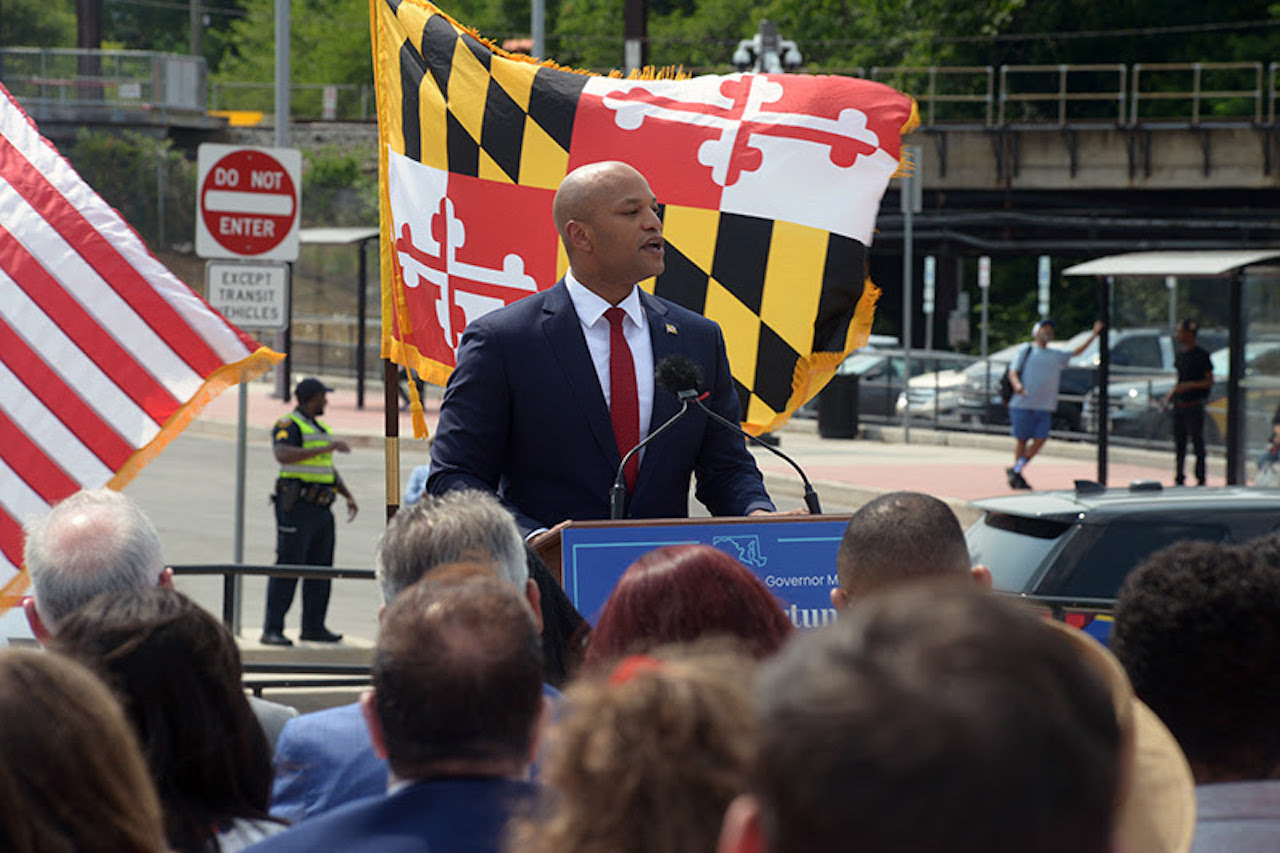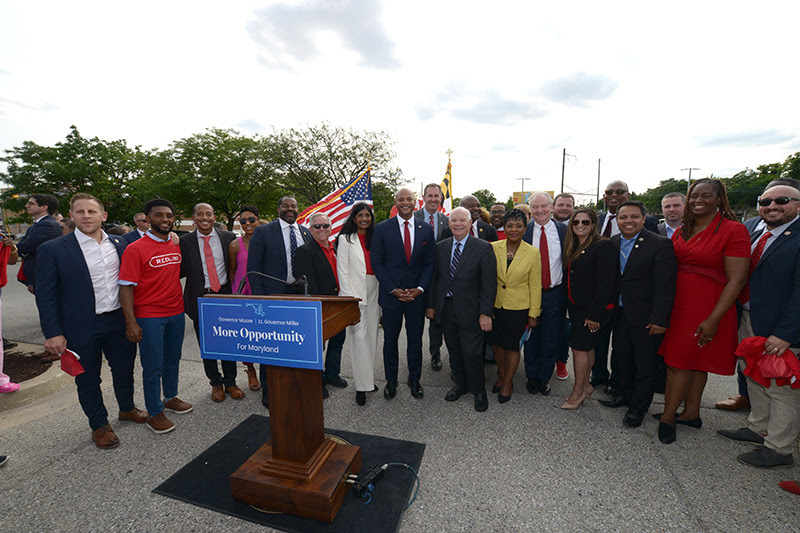
Gov. Moore Announces Baltimore Red Line Relaunch
Written by Carolina Worrell, Senior Editor
“Nearly a decade ago, the previous administration cut the Red Line project at a time when Baltimore was reeling from one of the most trying eras in recent history—but now is the time for us to get this right,” said Gov. Moore.
Maryland Gov. Wes Moore on June 15 announced the relaunch of Baltimore’s Red Line, a major investment in transit to “significantly enhance east-west connectivity across the Baltimore region.”
The announcement was made at the West Baltimore MARC Station where Gov. Moore was joined by Lieutenant Governor Aruna Miller; Maryland Department of Transportation Secretary Paul J. Wiedefeld and Maryland transportation officials; elected representatives from Maryland’s congressional delegation, the Maryland General Assembly, Baltimore City, Baltimore County; as well as agency partners, community advocates, and transit stakeholders representing a wide range of businesses and organizations.
Beginning two decades ago, the Baltimore Red Line proposal, which was canceled in 2015 by Gov. Moore’s predecessor, Larry Hogan, sought to “improve transit efficiency, fill an east-west transit gap, increase access to work and activity centers, provide connections to existing transit and other transportation modes, offer more commuter choices, and support economic development and community revitalization,” according to the Moore administration.
According to an Associated Press (AP) report, while the initial idea was for a light rail project, “it remains unclear how a revised Red Line project, which, in 2015 was estimated to be a $2.64 billion plan, will take shape, whether as a light rail, a rapid bus system or a combination of mass transit options.”
In the coming months, the Maryland Transit Administration (MTA) will lead the next development phase, “building on community participation to update and modernize the Red Line plan to meet the region’s needs and aspirations.” Key considerations include:
- Transit mode: Both light rail transit and bus rapid transit options were evaluated in the prior Red Line Environmental Impact Survey and in the East-West Feasibility Study.
- Tunneling: Options to reduce or eliminate tunneling downtown through on-street alignments to assess cost, benefits and drawbacks to tunneling.
- Highlandtown/Bayview alignment: Due to recent development in the Highlandtown area.
- Environmental changes: Assessment to reflect any conditions that have changes since 2013 and integration with other projects.
The Moore administration says the MTA will request entry into the federal Capital Investment Grants program in 2024, which requires Federal Transit Administration (FTA) oversight and would make significant federal financial assistance available to advance the project to full implementation.
The MTA, the Moore administration says, will also launch the Eastern Baltimore County Access Study to evaluate alignments for further expansions east into Baltimore County. This future phase of the Red Line will seek to connect the current alignment to the job centers in eastern Baltimore County.

“As Maryland begins to fulfill long-delayed promises to the Red Line corridor communities, the transit administration will act to implement solutions to improve east-west bus service now, including the August 27 launch of the QuickLink 40 service,” according to the Moore administration. This limited bus service pilot will operate between the Essex Park-and-Ride and the North Bend Loop to help improve travel times with reduced transfers between the CityLink Blue and Orange buses.
According to the Moore administration, the MTA is also making investments through its Fast Forward program to make bus shelter improvements, provide real-time information signs, and make Americans with Disabilities Act (ADA) improvements. Federal investment will also help address transit priority treatments, including bus lanes and pedestrian safety.
The administration says it “values community input” and will undertake an intensive community engagement effort to gather, share and consider project options. The first public engagement period is expected to begin in mid-July and continue through mid-August 2023.
“Nearly a decade ago, the previous administration cut the Red Line project at a time when Baltimore was reeling from one of the most trying eras in recent history—but now is the time for us to get this right,” said Gov. Moore. “We’re going to work together and seize this moment in our nation’s history when the stars are aligned to invest in public transit. Our communities are expanding, our jobs are growing, and we need to make sure that everyone in the region can get from where they live to where opportunity lies.”
“Before it was canceled in 2015, the initial Red Line plan was shaped by more than 10 years of study, engineering, environmental analysis, and substantial community participation,” said Maryland Department of Transportation (MDOT) Secretary Paul J. Wiedefeld. “Having signed the original Red Line Community Compact fifteen years ago, I know this project and the tremendous benefits it will bring to the community are long overdue.”
Insights and commitments from technical work and community engagement conducted for the original plan, together with the Central Maryland Regional Transit Plan East-West Corridor Feasibility Study completed in 2022, provide “a strong foundation for the project’s relaunch,” according to the Moore administration.
More information on the Red Line relaunch is available here.



